If you use your fireplace regularly during the colder months, it’s important to have your chimney swept and inspected annually. Many people simply never think about having their chimney flue professionally swept which can be dangerous and costly in the long run. It’s important to understand what’s involved in a typical chimney sweep appointment so you can ask the right questions and know what to look out for.
When calling around don’t just focus on the lowest price and quickest availability; they may be indicators of a lack of customer loyalty, professionalism, and experience in the industry. The last thing you’ll want is a house full of soot due to an inexperienced sweeper who isn’t properly insured!
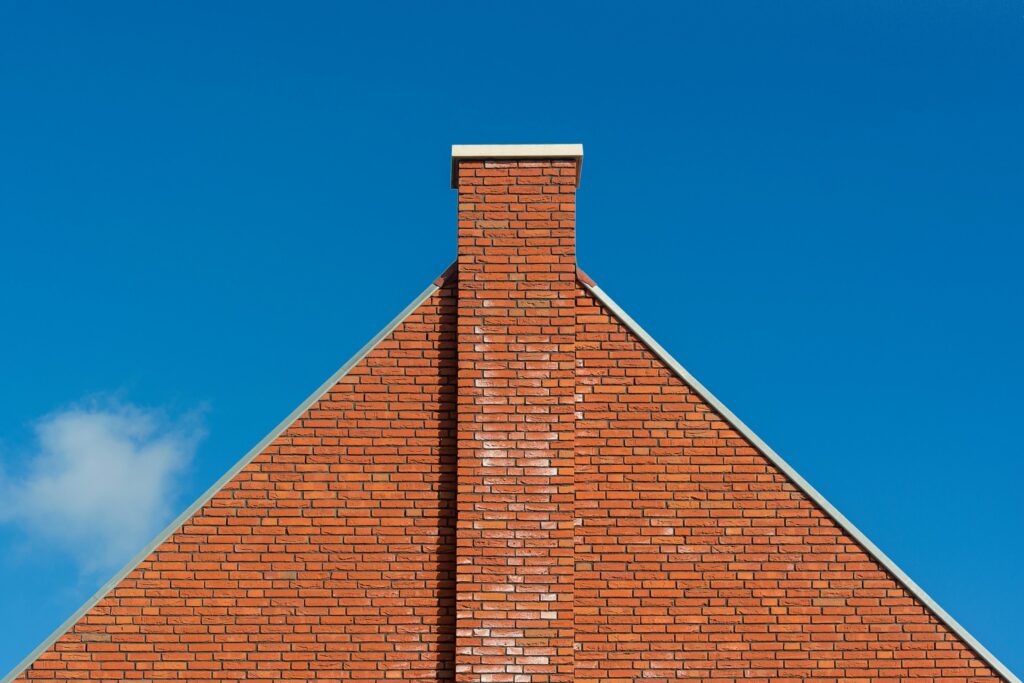
Why An Annual Chimney Sweep Is Essential
First let’s discuss why an annual chimney inspection is recommended. When wood is burned, soot and creosote are created as byproducts of combustion. These byproducts, known as combustion deposits, build up on the interior of your flue lining and must be removed to ensure safe operation. They can become dangerous if not removed regularly. Using wet or unseasoned firewood can lead to excessive glazed creosote which can eventually ignite within your chimney leading to potentially deadly, or at the very least costly, chimney fires. An annual chimney sweep cleans this build-up and helps keep you burning safely. Lastly, a chimney sweep will also take care of any additional blockages that may be caused by nests, leaves, and other debris!
Introduction to Chimney Safety
Chimney safety is a vital part of maintaining a safe and comfortable home. Regular chimney inspections are the cornerstone of preventing chimney fires and ensuring your heating system operates efficiently. According to the National Fire Protection Association, all chimneys, fireplaces, and venting systems should be inspected at least once a year. This annual inspection helps identify any issues with the chimney structure, flue liners, and chimney connection before they become serious hazards.
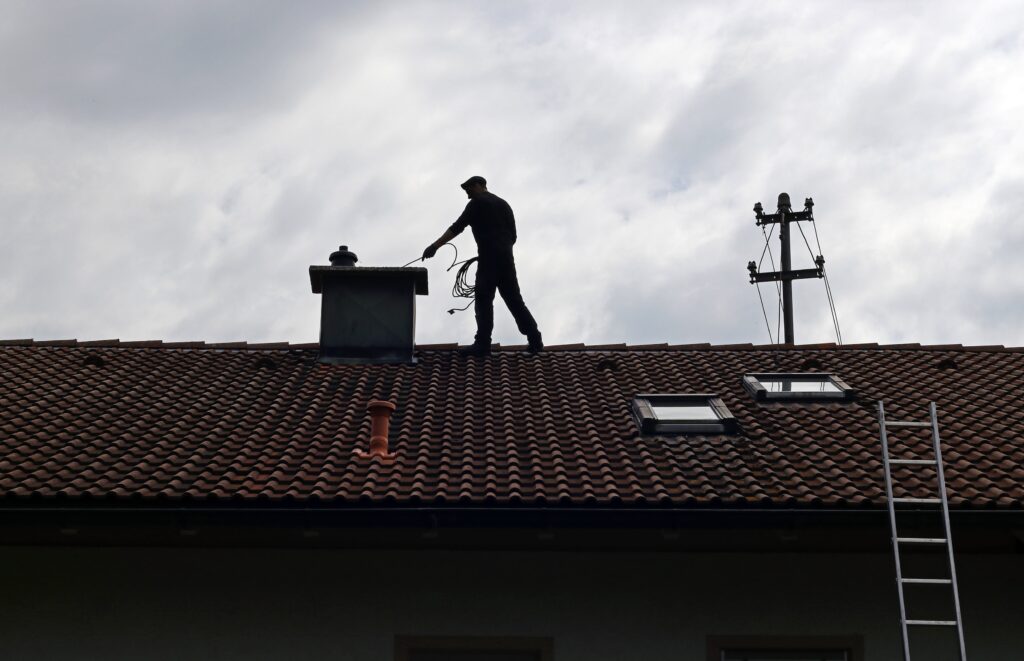
A certified chimney sweep or chimney service technician is trained to perform a thorough visual inspection of both the chimney exterior and interior. During this process, they assess the condition of the flue, check for blockages or combustible deposits, and ensure the venting system is functioning properly. By catching problems early, such as cracks in the flue liners or deterioration in the chimney exterior, you can prevent dangerous chimney fires and costly repairs down the line. Regular maintenance and inspections are essential for the continued safe use of your chimney and heating system, giving you peace of mind every time you light a fire.
What A Typical Chimney Sweep Appointment Looks Like
Initial Assessment and Setup
The technician will conduct an initial visual assessment of the exterior of the chimney and interior fireplace looking for signs of deterioration or smoke infiltration back into the home, as well as any exterior damage that could compromise the chimney’s integrity. Signs of smoke infiltration are typically seen as soot staining around the top of the fireplace opening, mantel, or ceiling above.
The technician will tarp the floors around the fireplace to ensure a clean area and prevent soot from damaging any surrounding areas.
The technician will setup a HEPA vacuum that will run while the chimney is being swept in order to prevent delicate soot particulate from infiltrating your home.
Brushing the Flue
The technician will either brush the flue from the top or the bottom. Bottom brushing is the more common method today and involves using several flexible rods that are attached together as the technician works their way up the chimney. A rotary brush is attached to the rods which spins and removes soot along the inner walls of the chimney flue. This process also targets buildup on the interior chimney wall to ensure thorough cleaning.
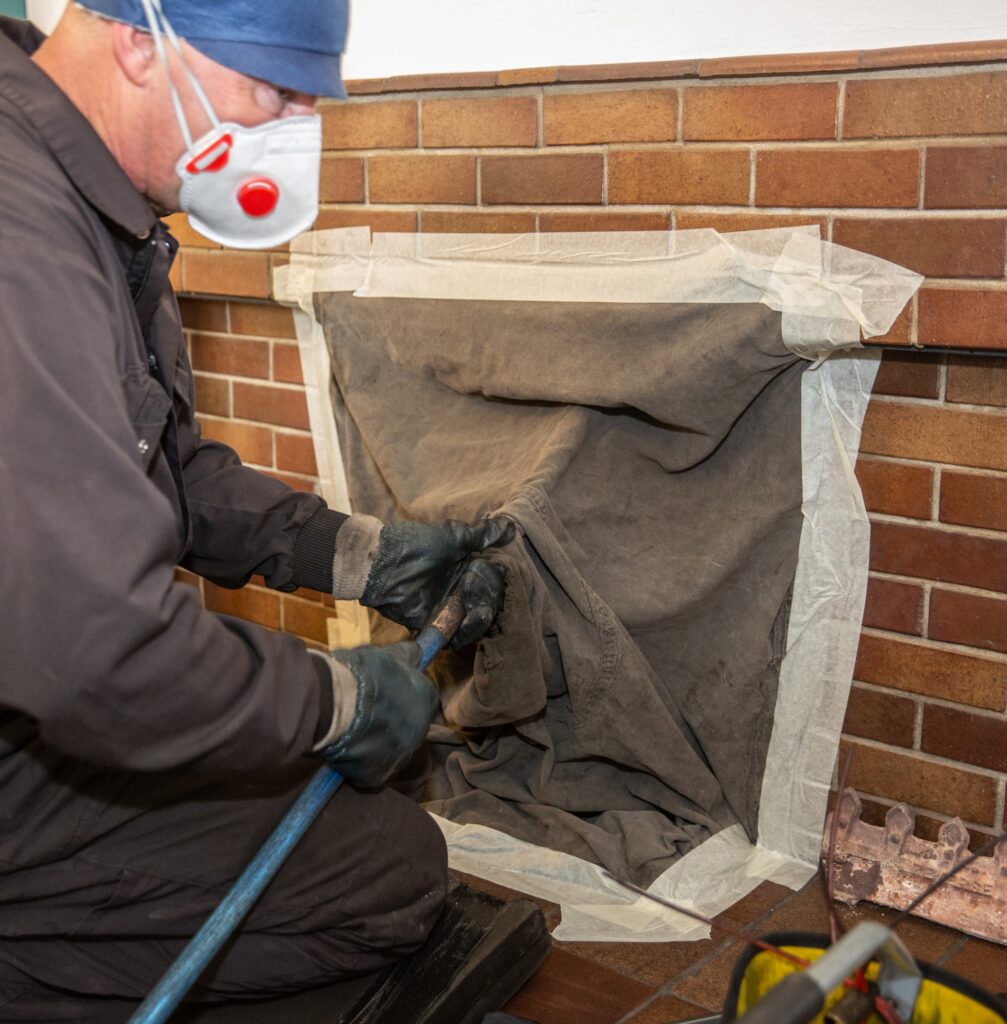
The HEPA vacuum should be running continuously in the fireplace during the sweep process to collect soot and debris as it drops from the flue.
The smoke chamber is scraped and vacuumed. The smoke chamber is the area just above the firebox before it tapers to the flue. This area is the most common area for creosote to build-up and is important to have it cleaned for fire prevention.
If the fireplace has an ash dump, the ash can be vacuumed via the clean-out door typically located in the basement but sometimes is located on the exterior of the chimney.
Chimney/Flue Inspection
Depending on your specific needs and desires the technician may conduct a Level 1, 2, or 3 Chimney Inspection. A Level 1 chimney inspection is typically performed annually along with the chimney sweep. A level 2 inspection is more comprehensive and is required in certain situations, such as after an operation malfunction, caused damage from chimney fires, weather events, or seismic events, or when there are changes in input rating or installation of a dissimilar type of appliance or flue. These inspections are essential for fire safety and for identifying any hidden hazard that could pose a risk to the property.
The technician may use a video scanner system to visually inspect the flue interior, including all accessible locations within the chimney system. As they move the camera up the chimney flue they look for gaps, cracks, and glazed or expanded creosote still left within the flue. During more advanced inspections, the technician may need to open doors or remove panels to access concealed areas and ensure a thorough assessment.
If conditions allow, the technician will access the top of the chimney from the exterior to inspect the masonry condition, flashing, chimney crown, and cap. Deterioration of any of these items can lead to water intrusion into the home and should be addressed early in order to prevent any serious damage before it’s too late.
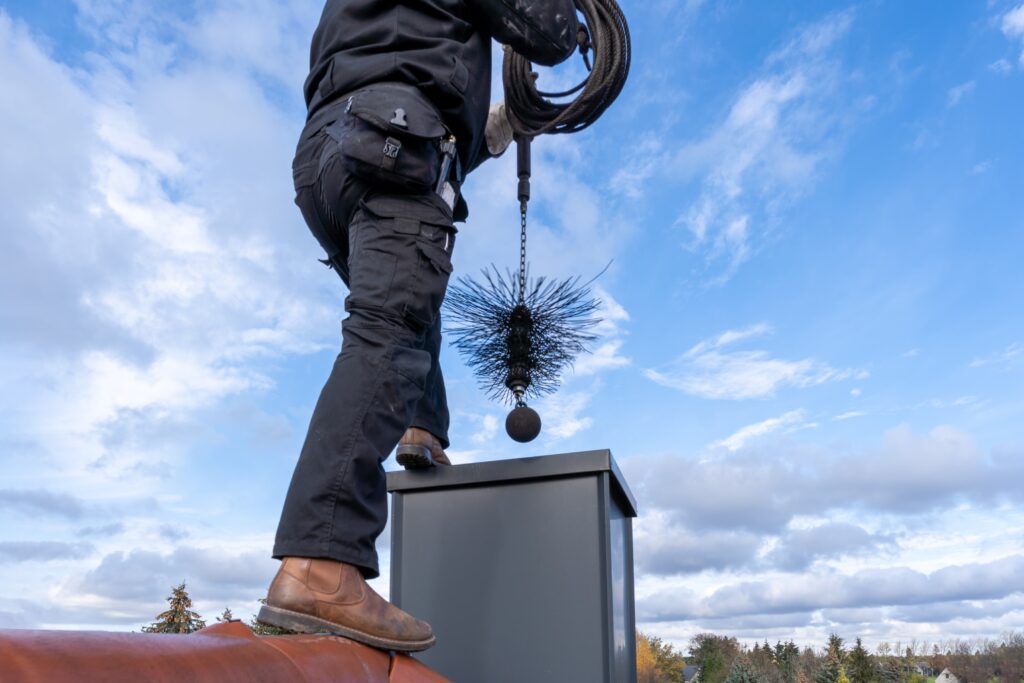
The technician will review their findings with you upon completing the inspection and let you know if the system is safe to use or if there are any issues to be addressed. The technician will also address proper clearances from combustible materials and check for proper clearances in accessible areas.
Typically a report with details and photographs is compiled and sent to the homeowner after the inspection. When calling around, ask if this is an included part of their chimney sweep service.
The Importance of Hiring a Professional
When it comes to chimney inspections and maintenance, hiring a professional is not just a recommendation; it’s a necessity for ensuring the safety and longevity of your chimney system. Certified chimney sweeps and chimney service technicians have undergone extensive training and are equipped with the knowledge to identify hidden hazards that an untrained eye might miss. They are familiar with the latest safety standards set by organizations like the Chimney Safety Institute of America and the National Fire Protection Association, ensuring your chimney meets all necessary requirements.
Attempting a DIY inspection or cleaning can lead to overlooked issues, such as improper clearances, concealed damage, or unsafe venting systems. Professionals use specialized tools and techniques to access hard-to-reach areas, inspect internal surfaces, and evaluate the basic soundness of the chimney structure. They can also address proper construction and installation of flue liners, chimney crowns, and other critical components. By relying on a certified chimney sweep, you not only protect your property from potential building fires but also ensure that your fireplace and heating system continue to operate safely and efficiently.
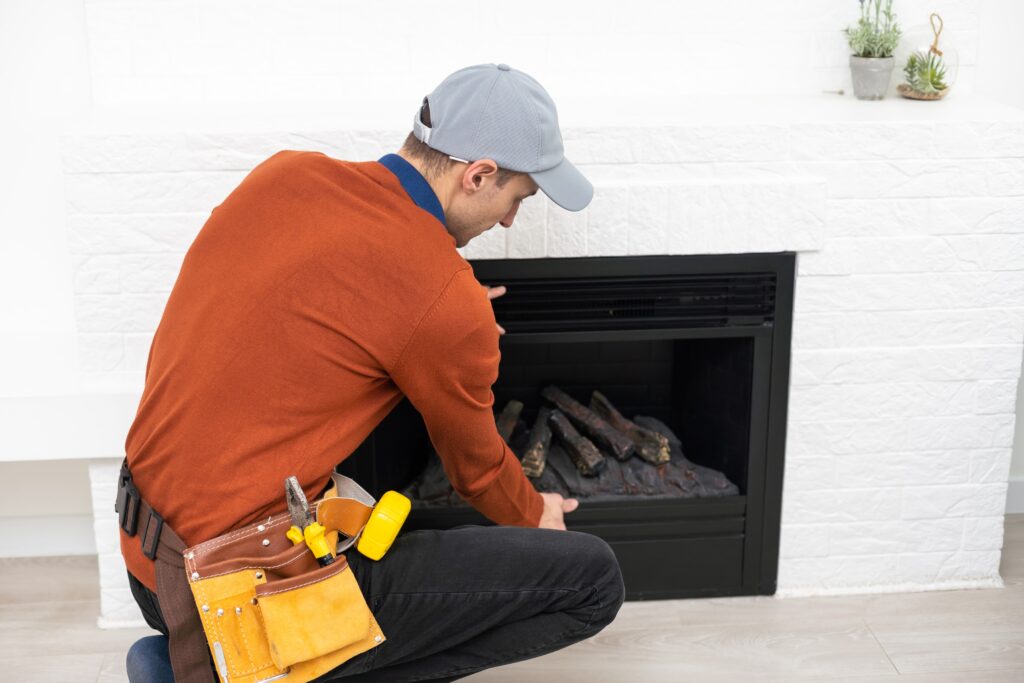
Advanced Inspection Options
While a Level 1 chimney inspection is the minimum requirement for annual maintenance, there are situations where a more in-depth inspection is necessary. The three levels of chimney inspections, as defined by the National Fire Protection Association, are designed to address different needs and circumstances.
A Level 1 chimney inspection is a basic visual inspection of all readily accessible portions of the chimney, flue, and venting system under the same conditions and with the same appliance or fuel type. This is suitable for chimneys that have not experienced any changes or problems.
A Level 2 chimney inspection is required when there have been changes to the system, such as a new appliance installation, a change in fuel type, or after an external event like a chimney fire, seismic event, or severe weather. This level of inspection includes all aspects of a Level 1 inspection, plus an examination of accessible portions of the chimney exterior and interior, including attics, crawl spaces, and concealed areas. Video scanning and specialty tools may be used to gain access to hidden parts of the chimney system and to inspect flue liners incorporated into the structure.
A Level 3 inspection is the most comprehensive and is performed when serious hazards are suspected. This may involve the removal of permanently attached portions of the building structure or chimney to access concealed portions and address hidden hazards. Demolition equipment and special tools may be required to thoroughly inspect and ensure the safety of the chimney system.
By understanding the different levels of chimney inspections, homeowners can work with their chimney technician to determine the appropriate level of inspection for their property, ensuring all potential risks are addressed and the chimney is safe for continued service.
Your Next Steps
Annual chimney inspections are a critical part of home maintenance, protecting your property and loved ones from the dangers of chimney fires and structural damage. By scheduling regular inspections with a certified chimney sweep, you ensure that your chimney, flue, and venting system are in optimal condition and operating safely. Whether you need a basic visual inspection or a more advanced assessment, professional chimney service technicians have the expertise and tools to keep your fireplace and heating system running smoothly.
Don’t wait until a problem arises. Take proactive steps to maintain your chimney’s safety and efficiency. Only choose a reputable and certified chimney sweeping company. Contact TOR Chimney today to schedule your annual inspection and enjoy peace of mind all season long.


